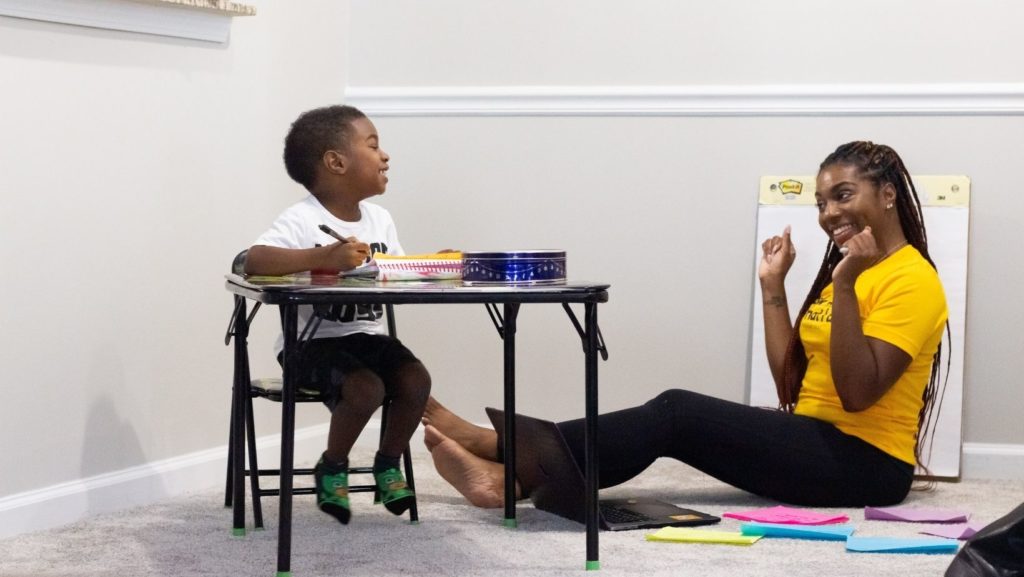It’s your first week back in the classroom and you’re attempting to have your students complete a chapter of “Number the Stars” by way of round robin reading. The activity takes more than double the amount of time you’d alloted due to students being disruptive, lack of concentration and a slew of other issues related to unruly classroom behavior. You leave the day without completing your lesson plan, feeling utterly overwhelmed and defeated. Does this strike a chord?
As educators reorient themselves with teaching in-person five days a week after more than a year of online schooling — or in some cases a flex schedule — they’re once again needing to contrive effective techniques for managing their classrooms and students, especially those who have attention deficit hyperactivity disorder (ADHD).
In fact the COVID-19 pandemic and subsequent switch to online schooling in 2020 had worsening effects on many children’s symptoms of ADHD, a recent study suggests.
Researchers surveyed 241 parents and asked them to rate their children’s ADHD behaviours throughout the COVID-19 lockdown. The results found that the average of children’s ADHD behaviors in categories such as attention, listening, and interrupting were significantly exacerbated during the shutdown.
To maintain a learning-positive environment and get at this issue, there are a number of methods and techniques teachers can utilize to improve the manageability of their classrooms.
One such technique is operant conditioning, also known as instrumental conditioning. The method — which is attributed to American psychologist B.F. Skinner — is a learning technique that employs rewards and punishments based on behaviors. According to the practice, behavior that is rewarded is more likely to be repeated while behavior that is punished is less likely to occur frequently.
In operant conditioning, positive and negative are used in mathematical terms: positive indicates that something is added, and negative indicates something is subtracted or taken away. When applied to a classroom setting, operant conditioning takes the form of positive reinforcement, whereby a specific behavior leads to a desirable consequence with the ultimate goal of individuals repeating specific behaviors.
While decades ago many teachers utilized stern punishment tactics such as yelling, shaming and elongated seclusion in lieu of more pragmatic strategies, research has since suggested that there are more effective ways to shift student’s behavior in learning environments. One study in particular shows that positive reinforcement can be helpful for educators teaching students with ADHD as it can minimize learner’s non-compliant, disobedient behavior.
How do educators who are teaching kids with ADHD implement positive reinforcement tactics in the classroom?
According to an intervention tip sheet published by the College of Education’s Institute on Community Integration at the University of Minnesota, Minneapolis, there are five different types of reinforcers a teacher can utilize in the classroom setting.

- Natural: This type of reinforcement results directly from appropriate behavior. One example of this is when a student interacts appropriately with peers in group activities, it often leads to more invitations to join such activities in the future.
- Social: This type of reinforcement is typically distributed by teachers, parents, other adults, and peers by expressing verbal or non-verbal praise for appropriate behavior. Examples of this are positive comments when a student has completed an assignment well, written approval, and silent expressions of approval such as head nodding, smiling, etc.
- Activities: This category of reinforcers allow students to participate in favorable activities, such as extra recess, computer time, etc., as a reward for good behavior.
- Tangibles: These include items such as pencils, special snacks, stickers, etc., that can be given to students as powerful motivators to aid success. Awards can also be given out in the form of certificates, displaying work, and letters home to parents commending the student.
- Secondary Reinforcement: This reward system materializes when educators give students vouchers for appropriate behavior. For example, designing a points-based system or other rewards with little value which can be exchanged for something more valuable.
Choosing a reinforcer:
When deciding which type of positive reinforcement to use, it’s important to remember that motivators are different for each student. Teachers can use the following guidelines to help steer decision making.
- Observe: What kinds of activities does a student with ADHD seek out? What objects or events are presently serving to reinforce his or her behavior?
- Question: Asking students how they would prefer to earn rewards helps you design a plan to modify behavior.
- Monitor: Occasionally review whether the reinforcer being used remains preferred by students or whether a new reinforcer would be more effective.
Conclusion
Although the return to the classroom can feel daunting at times — particularly when dealing with student misbehavior — psychological studies support the idea that positive reinforcement teaching tactics in schools can amplify favorable behavior. Consistent and frequent reinforcement can have outcomes of positive behavior from students with ADHD. As an additional note, many of these techniques may also be applied to parenting and work well to improve children’s behavior at home as well.
WC: 843
References
https://pubmed.ncbi.nlm.nih.gov/15910202/
https://ceed.umn.edu/wp-content/uploads/2017/05/Positive-Reinforcement.pdf
https://www.ncbi.nlm.nih.gov/pmc/articles/PMC7195413/







